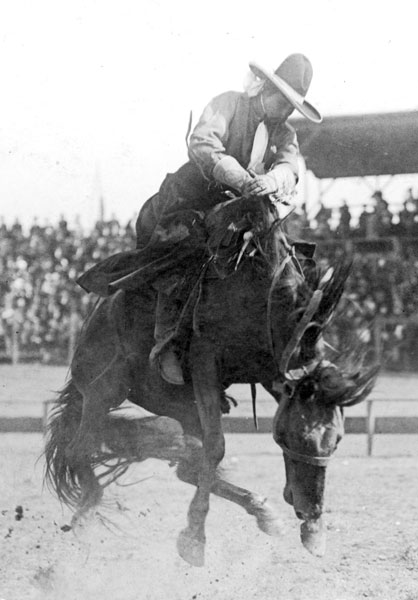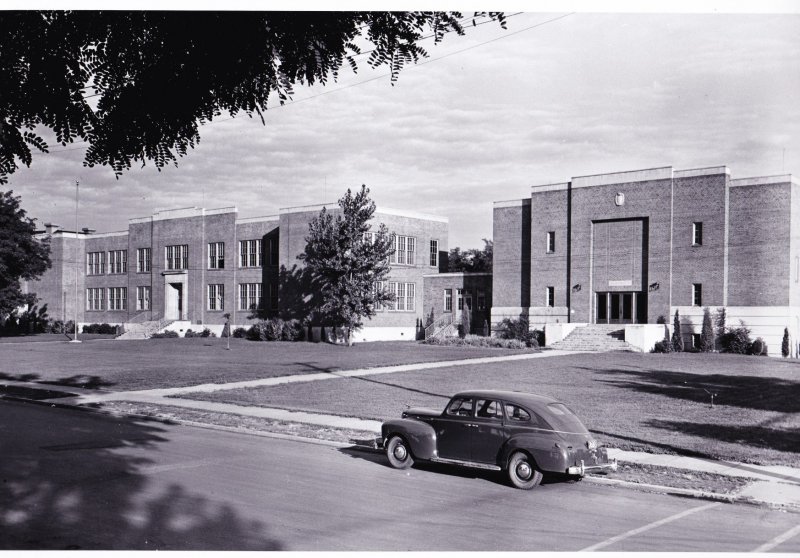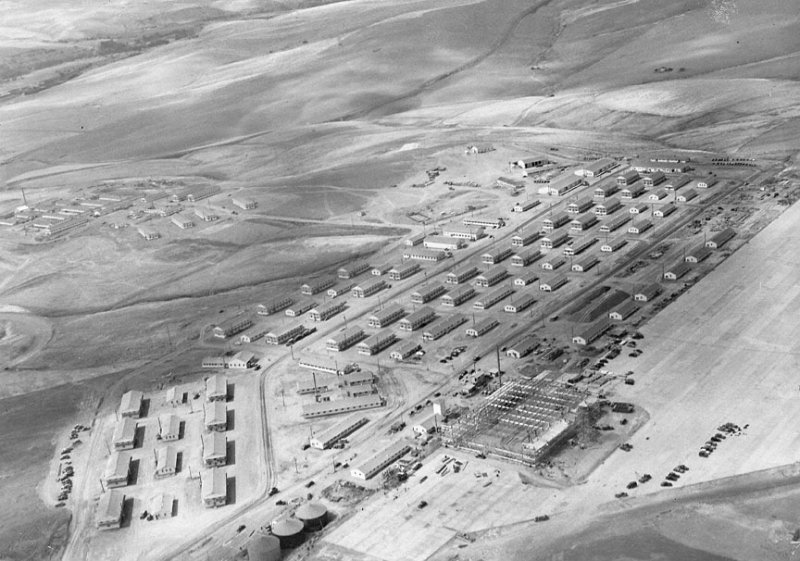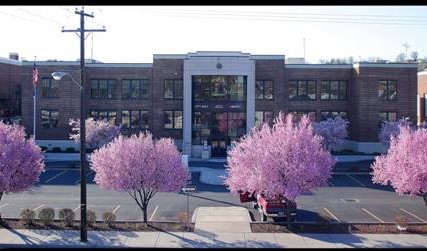History of Pendleton
Once a stop along the Oregon Trail and the home of western pioneers, the City of Pendleton can trace its modern roots back to the mid-1800s.
19th Century
The City of Pendleton is adjacent to the Umatilla Indian Reservation and built on lands once claimed by the Umatilla, Cayuse, and Walla Walla tribes. In May, 1855, five Indian tribes of Eastern Oregon and Washington territory met in Walla Walla to make a treaty with government officials. That treaty is known as the Treaty of 1855 and resulted in the formation of the Confederated Tribes of the Umatilla Reservation.
In 1851, Dr. William C. McKay (pronounced mack-EYE), established a trading post at the confluence of McKay Creek and the Umatilla River, and settlers began to dot the area. In the early 1860s, Moses Goodwin and his family were traveling east to Idaho when they stopped for the night along the Umatilla River. Goodwin quickly decided to stay and traded a span of mules for 160 acres. Goodwin and his wife, Aura, turned a cabin into Goodwin Station, which would have sat on modern-day Main Street, built a bridge across the Umatilla River, and opened Goodwin’s Hotel . In 1868, the Goodwins deeded 2.5 acres of land to Umatilla County for the establishment of a town. The county built a courthouse, and the new city was named after George H. Pendleton, a 1864 vice presidential candidate.
The first plat of Pendleton was filed on Dec. 18, 1868, when the city had about 250 residents. The City of Pendleton was incorporated on Oct. 25, 1880 with a population of 730, and by 1900, Pendleton was the fourth-largest city in the state.
Early 20th Century
A brick City Hall was built in 1908 at 34 S.E. Dorion housed city government offices as well as the police department, fire department, and the school district. The first ordinance of the City dealt directly with drunkenness in public places, fights, and discharging of guns within the City limits. There are also accounts in the City Council minutes about Council members having to wade through knee deep mud and sewage from the inadequate septic tank drainage within the City. These major public works problems were overcome through the concerted efforts of citizens and through many trips by the Mayor of Pendleton to Salem to encourage the State legislature to allow the City to increase the debt limits of the City.
Main Street and Court Street were paved in 1909, the same year the Pendleton train depot opened, and in 1910, local attorney Roy Raley decided to host “a frontier exhibition of picturesque pastimes, Indian and military spectacles, cowboy racing and bronco busting for the championship of the Northwest.” That event became the Pendleton Round-Up, one of the best known rodeos in the world. The show was such a success that property was purchased and permanent buildings and grounds were constructed to hold the annual event. The slogan "Let'er Buck" was adopted as the Round- Up byline. The traditional event is held annually in the second week in September and now draws over 50,000 people. The Happy Canyon Night Show was added in 1916.
 The City of Pendleton continued to grow in the early 20th century. The Umatilla River levy, and the water transmission line were completed around 1915. Between 1900 and 1937, many of the wooden buildings in downtown were replaced by brick structures, two- or three-stories tall with basements connected by underground sidewalks and delivery spaces.
The City of Pendleton continued to grow in the early 20th century. The Umatilla River levy, and the water transmission line were completed around 1915. Between 1900 and 1937, many of the wooden buildings in downtown were replaced by brick structures, two- or three-stories tall with basements connected by underground sidewalks and delivery spaces.
Pendleton, like many communities in Oregon, was hard hit by the depression of the 1930s. During the depression, City employees took a cut in pay and the situation became so desperate that the City printed and issued scrip to be redeemed at local stores by City employees. Apparently the scrip was very successful since it appears the City somehow made money during the period it issued the scrip.
Also in the 1930s, John Vert dedicated his sizable will to the city, which was used in 1937 to build a junior high school. The Vert Auditorium, home of the Oregon East Symphony, still bears his name. Pendleton Junior High School was renamed after long-time educator Helen McCune in 1956.
Mid 20th Century
In 1941, more than 2,000 soldiers came to Pendleton as the Pendleton Airport became the site of a military airbase during World War II. Runways at the airport were expanded, housing added, a sewer and water system established, all to prepare  for the training of American pilots which served overseas.
for the training of American pilots which served overseas.
Two famous military groups, the Triple Nickles and The Doolittle Raiders, have ties to Pendleton. The Doolittle Raiders, under Lt. Col. James Jimmy Doolittle, were the first air squadron to bomb Japan during World War II. They trained in Pendleton.
The airport and surrounding property turned over to the City of Pendleton after the war ended and now houses the Eastern Oregon Regional Airport, the largest public airport in Northeast Oregon. Many of the structures and improvements built during the war are still visible at the airport today.
A major change for the City of Pendleton happened in 1948 when the community adopted a Council/Manager form of government. The Council/Manager structure provides that all City employees work for the City Manager and the City Manager works for the City Council. The Council/Manager form of government assumes municipal operation can be run like a business and the City Manager serves as the general manager of this business. All are encouraged to attend a City Council meeting to see the operation of this form of government in action.
Late 20th Century to today
In September, 1994 voters approved a $2.95 million general obligation bond issue to convert the Helen McCune Junior High School to a City Hall and Library. The City relocated to the building during November 1996, and the City Hall at 34 S.E. Dorion was sold for private development. The Carnegie building, which housed the Library at 214 North Main, was leased to the Pendleton Arts Council and is now the Pendleton Center for the Arts.
The relocation of the City to the former Helen McCune Junior High Building brings a strong community emphasis to the 400  and 500 blocks of S.W. Dorion Avenue. The structures include the Vert building, City Hall and Library, and Pendleton Rec Center. There are community meeting rooms and the Council Chambers/Municipal Court Room housed at this location.
and 500 blocks of S.W. Dorion Avenue. The structures include the Vert building, City Hall and Library, and Pendleton Rec Center. There are community meeting rooms and the Council Chambers/Municipal Court Room housed at this location.
More information
Want to learn more about the history of Pendleton? Visit our Historic Buildings page or stop into one of our area’s museums:



